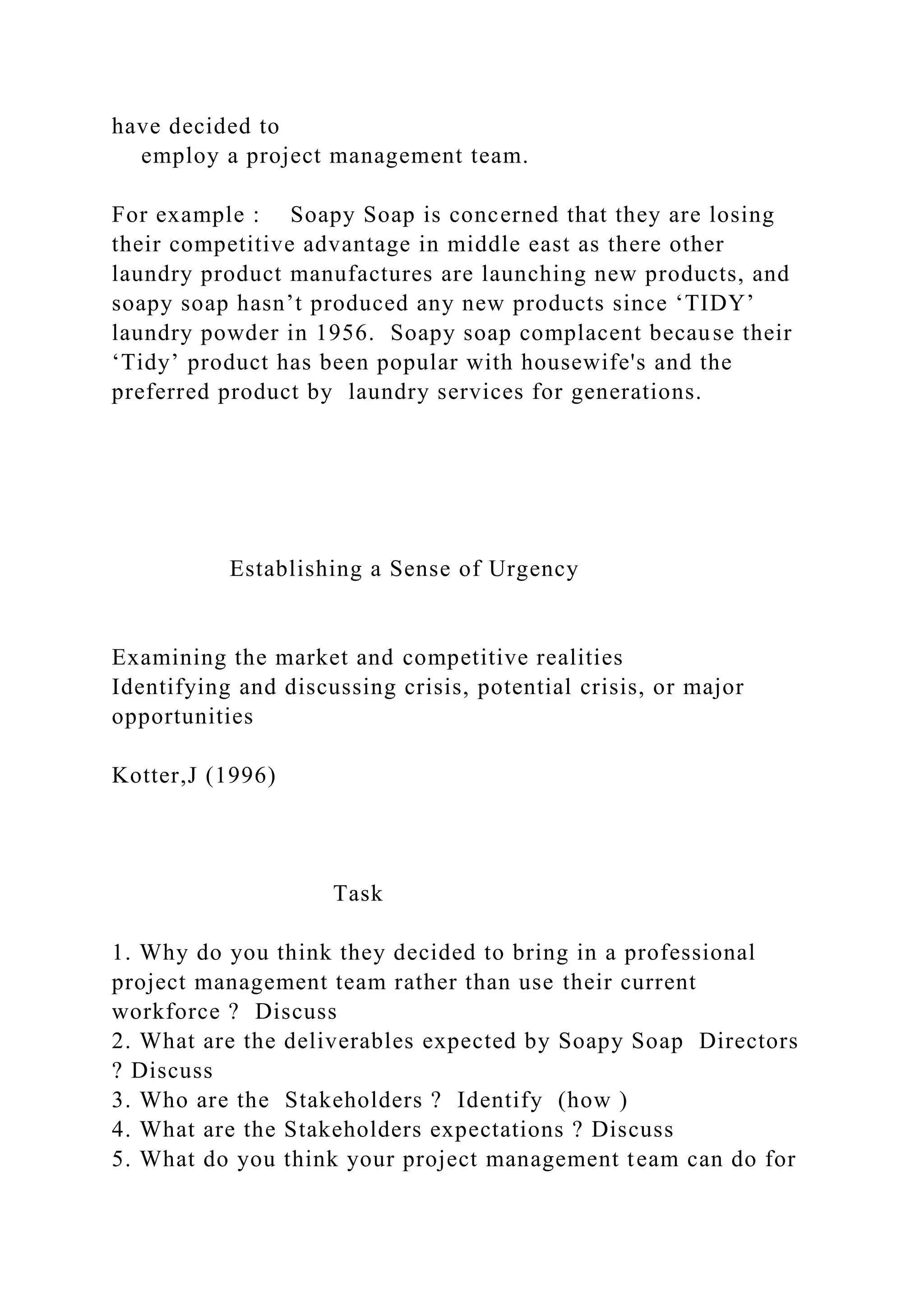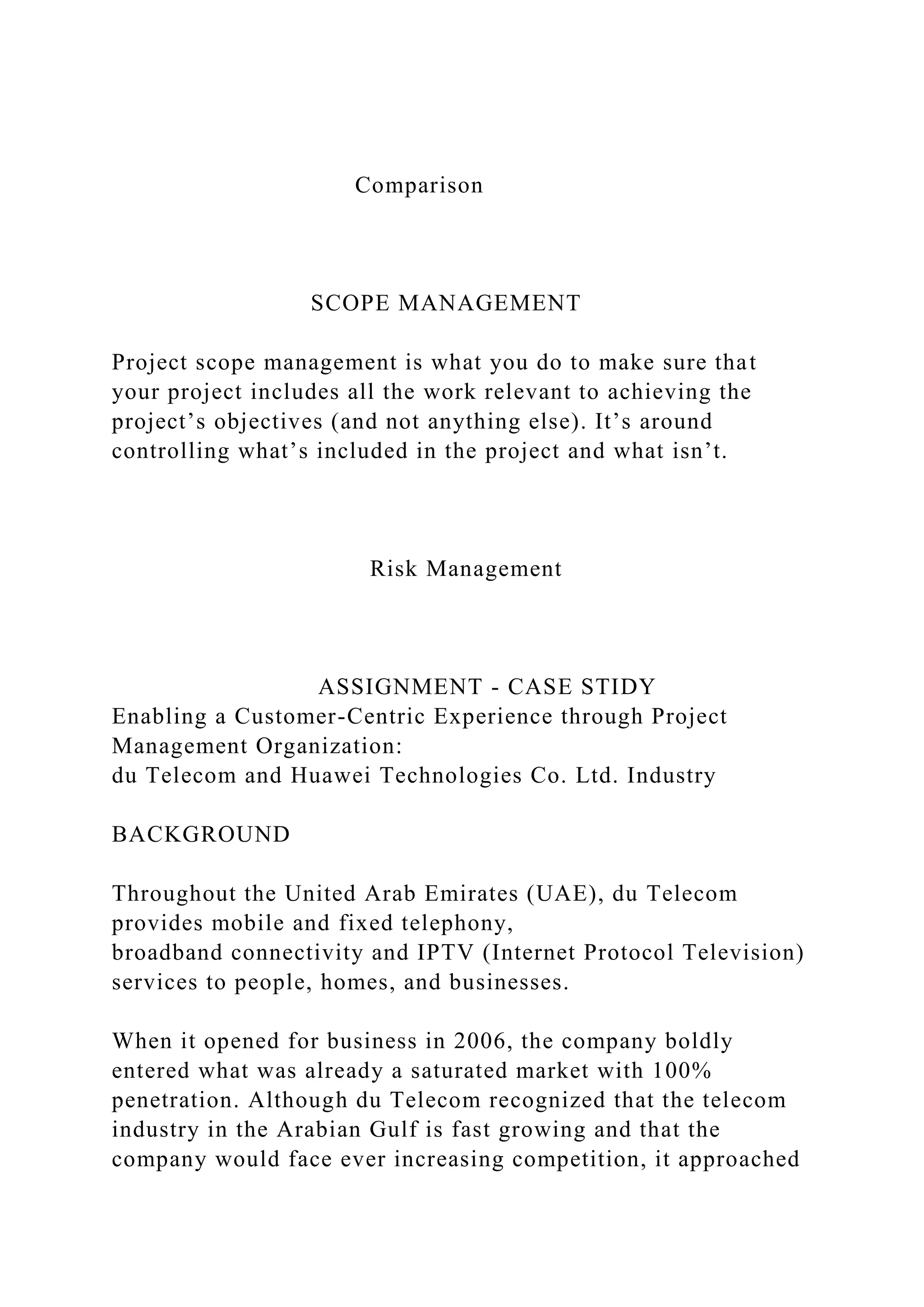The document outlines the objectives and importance of managing a successful business project at the BTEC Level 5 HND, emphasizing skills in establishing project aims, conducting research, and communicating recommendations. It discusses the significance of project management in adapting to market changes, enhancing organizational efficiency, and achieving strategic advantages through improved planning and execution. Additionally, it details various project management phases, methods, and tools, including Gantt charts and the PRINCE2 framework, highlighting the need for effective communication and stakeholder engagement throughout the project lifecycle.
![Pearson HND BTEC Level 5 HND
Managing a Successful Business Project (MSBP)
LO 1
[email protected]
Managing a Successful Business Project
Learning Outcomes
By the end of this module you will be able to:
Establish project aims, objectives and timeframes based on the
chosen theme.
Conduct small-scale research, information gathering and data
collection to generate knowledge to support your project.
Present your project and communicate appropriate
recommendations based on meaningful conclusions drawn from
the evidence findings and/or analysis.
Reflect on the value you have gained from conducting a project
and its usefulness to support sustainable organisational
performance.
LO1 : Establish project aims, objectives and timeframes based
on the chosen theme.
P1 - Devise project aims and objectives for a chosen scenario.
P2 - Produce a project management plan that covers aspects of
cost, scope, time, quality, communication, risk and resources.](https://image.slidesharecdn.com/pearsonhndbteclevel5hndmanagingasuccessfulbusinesspr-221204163353-60fe47a3/75/Pearson-HND-BTEC-Level-5-HNDManaging-a-Successful-Business-Pr-docx-1-2048.jpg)






















![competition as an acronym for "PRojects IN Controlled
Environments". However, it soon became regularly applied
outside the purely IT environment, both in UK government and
in the private sector around the world.[3] PRINCE2 was
released in 1996 as a generic project management method.[4]
PRINCE2 has become increasingly popular and is now a de
facto standard for project management in many UK government
departments and across the United Nations system.[5] In the
2009 revision, the acronym was changed to mean 'PRojects IN a
Controlled Environment'.
In July 2013, ownership of the rights to PRINCE2 was
transferred from HM Cabinet Office to AXELOS Ltd, a joint
venture between the Cabinet Office and Capita plc.
Since 2006, the method has been revised. It launched as
"PRINCE2:2009 Refresh" in 2009. The name "PRINCE2"
(instead of "PRINCE3" or similar) remains to indicate that the
method remains faithful to its principles. Nevertheless, it is a
fundamental revision of the method from 1996 to adapt it to the
changed business environment, to make the method simpler and
lighter, to address current weaknesses or misunderstandings,
and to better integrate it with other AXELOS Global Best
Practice methods (ITIL, P3O, P3M3, MSP, M_o_R etc.).
PRINCE2 is part of a set of Best Practice products and is
closely aligned with a sister product for the management of
programmes
'Managing Successful Projects with PRINCE2 - 2009
Edition',[6]
'Managing Successful Programmes' 1999, fourth edition in
2011.
Both the Foundation and Practitioner Examinations are based on
the 2009 revision 'Managing Successful Projects' manual
Overview of PRINCE2[edit]](https://image.slidesharecdn.com/pearsonhndbteclevel5hndmanagingasuccessfulbusinesspr-221204163353-60fe47a3/75/Pearson-HND-BTEC-Level-5-HNDManaging-a-Successful-Business-Pr-docx-24-2048.jpg)




![Andrew, a Reg reader who has been affected by this week's
problems, said: "This is causing a lot of stress and upset for
those of us who are trying to legitimately deal with the CSA and
who are now 'on hold' unable to add to information to their
cases.
"I'm under a lot of stress, haven't slept for days and have to
keep waiting with the millstone of an incorrect calculation
around my neck."
The CSA said HP Enterprise Services is working as quickly as
possible to identify and fix the latest fault.
CASE STUDY
In 2004, EDS was criticized by the UK's National Audit
Office for its work on IT systems for the UK's Child Support
Agency (CSA), which ran seriously over budget causing
problems which led to the resignation of the CSA's head, Doug
Smith on 2004-11-27. The system's rollout had been two years
late and following its introduction in March 2003 the CSA was
obliged to write off £1 billion in claims, while £750 million in
child support payments from absent parents remained
uncollected.
An internal EDS memo was leaked that admitted that the CSA's
system was "badly designed, badly tested and badly
implemented". UK MPs described it as an "appalling waste of
public money" and called for it to be scrapped.[23]
CSA New System
The new system is a break from the failures of the past, which
saw children miss out on support despite hugely expensive
running costs.](https://image.slidesharecdn.com/pearsonhndbteclevel5hndmanagingasuccessfulbusinesspr-221204163353-60fe47a3/75/Pearson-HND-BTEC-Level-5-HNDManaging-a-Successful-Business-Pr-docx-29-2048.jpg)






